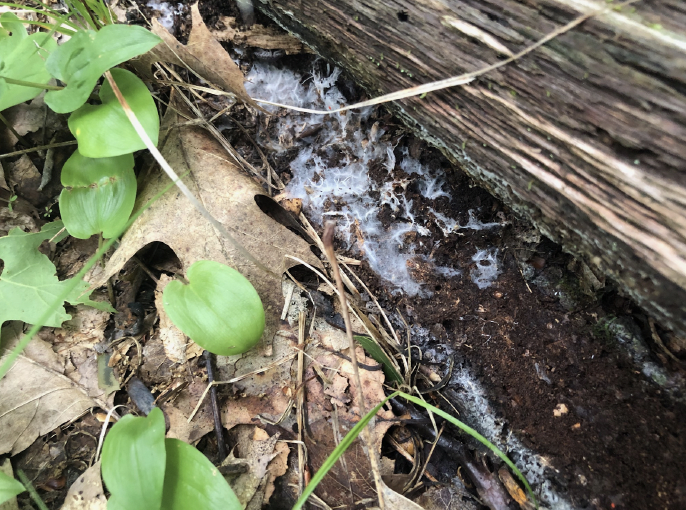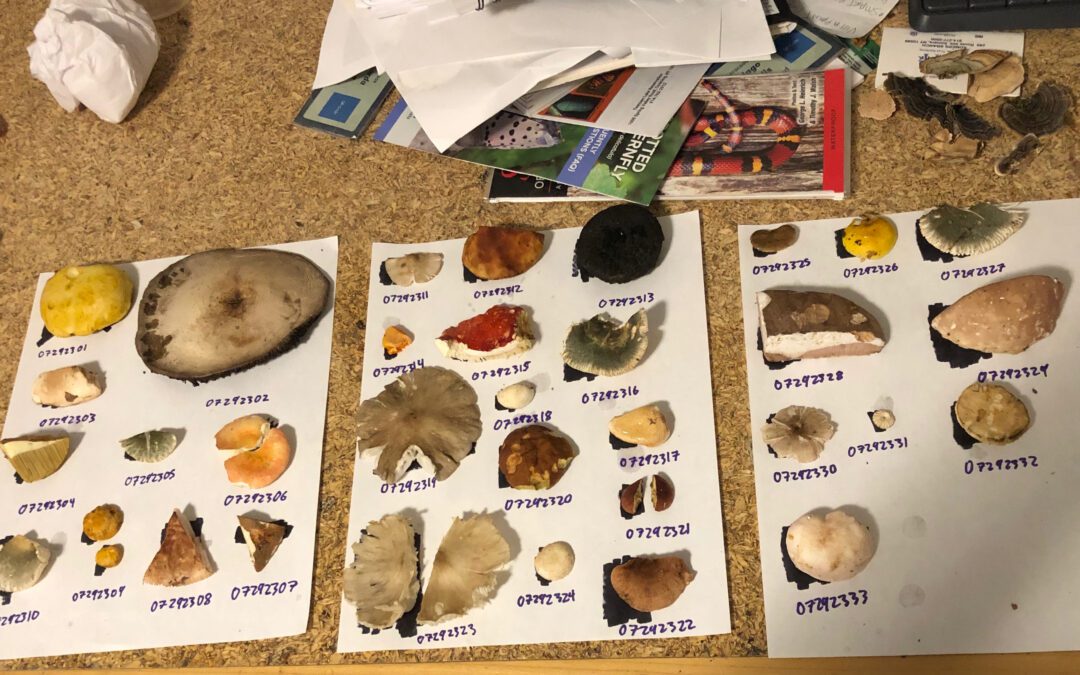Mason Rowe, our 2023 Summer Garden Intern, talks fungi.
Whether you joined Mason for one of his pop-up fungi walks or not, you’re sure to learn something in his blog on the subject!
What is Fungi?
Learning about fungi is an incredibly rewarding experience, yet many people know next to nothing about this kingdom. Mushrooms are primarily thought of as the button mushrooms in the grocery store, or a mysterious mixture of dangerous and psychedelic properties focused on by the media. But there is so much more to fungi than these concepts, with mushrooms being involved in everything from ecological connectivity to medicine.
So, what is fungi? Generally speaking, fungi is a kingdom characterized by heterotrophs with chitin in their cell walls that have hyphae. Heterotrophs are organisms that eat other organisms and don’t photosynthesize. You, your dog, the birds outside, and fungi are all heterotrophs because you get your nutrition by breaking down complex organic substances.
Chitin is a fibrous substance made of polysaccharides (which are a bunch of sugar molecules bonded together) that creates a hard outer shell in the cell walls of fungi and is also found in insect exoskeletons. Chitin does a lot of things for fungi, like providing a rigid support needed in the absence of a skeleton and helping some pathogenic fungi avoid detection by their host.
Fungi also have structures called ‘hyphae’ which are branching filaments that look like bundles of thread.If you go outside and start flipping logs, eventually you’ll find something that looks like a white bunch of cobwebs growing under the log. This is an example of hyphae forming the mycelium, the main undifferentiated ‘body’ of fungi.
Fungi are eukaryotes, which means they can form multicellular organisms (like you!) and contain their DNA inside a nucleus, in addition to having more specialized organelles than prokaryotes. Fungi is more than just mushrooms, other members of this kingdom include mildews, yeasts, and molds.

Mycelium under log
One common misconception that many people have about mushrooms (and fungi in general) is that they are related to plants. Evolutionarily, fungi are actually more closely related to animals than plants! Lichen, the crusty and vaguely leaf-like organism that grows on rocks, is a symbiotic relationship between a fungi and an algae (a plant).

While many people assume these two kingdoms (plants and fungi) are related due to some loose structural similarities, on a cellular level they have some significant differences. As I mentioned earlier, fungi’s cell walls contain chitin. The cell walls of plants are made up of a different polysaccharide called cellulose that gives its cell walls structure. Plants are also autotrophs, meaning they make their own food via photosynthesis, and contain chloroplasts which are specialized organelles that convert carbon dioxide and water into a sugar called glucose with an oxygen byproduct. The most interesting difference between plants and fungi is how their bodies are differentiated in multicellular organisms. Differentiation is the process when undifferentiated tissues, called meristematic tissues in plants or stem cells in humans, are changed into specialized cells for different body structures. Plants can be differentiated into roots, stems, and leaves. Each of these tissues perform a specific function and are built together to create different structures. Fungi, on the other hand, are much less differentiated than plants (or animals). Fungi are mostly made of mycelial tissues (the lines of hyphae) that are ‘weblike’ or ‘branching’. These tissues are somewhat reminiscent of the roots of plants, and make up the ‘body’ of fungi. Mycelium is interwoven in the substrate the fungi is growing in and it seeks out and breaks down food, connects the roots of plants in symbiotic relationships, and produces the fruiting bodies of mushrooms. The fruiting bodies, or the ‘mushroom’ part that can be made up the stipe (stem) and pileus (cap) or take a variety of other forms, is the part of the fungi used for reproduction. The fruiting body (sometimes called the sporocarp) contains spores that are dispersed for the fungi to reproduce. This is the part of the fungi used for ID, and comes in many different structures, colors, textures, and sizes.
The Mycocultural Revolution by Peter McCoy



Good info mainly but your title “What Is Fungi” is incorrect. “Fungi” is plural, “fungus” is singular. Also, “algae” is plural, “alga” is singular. Also, not all plants are autotrophs.